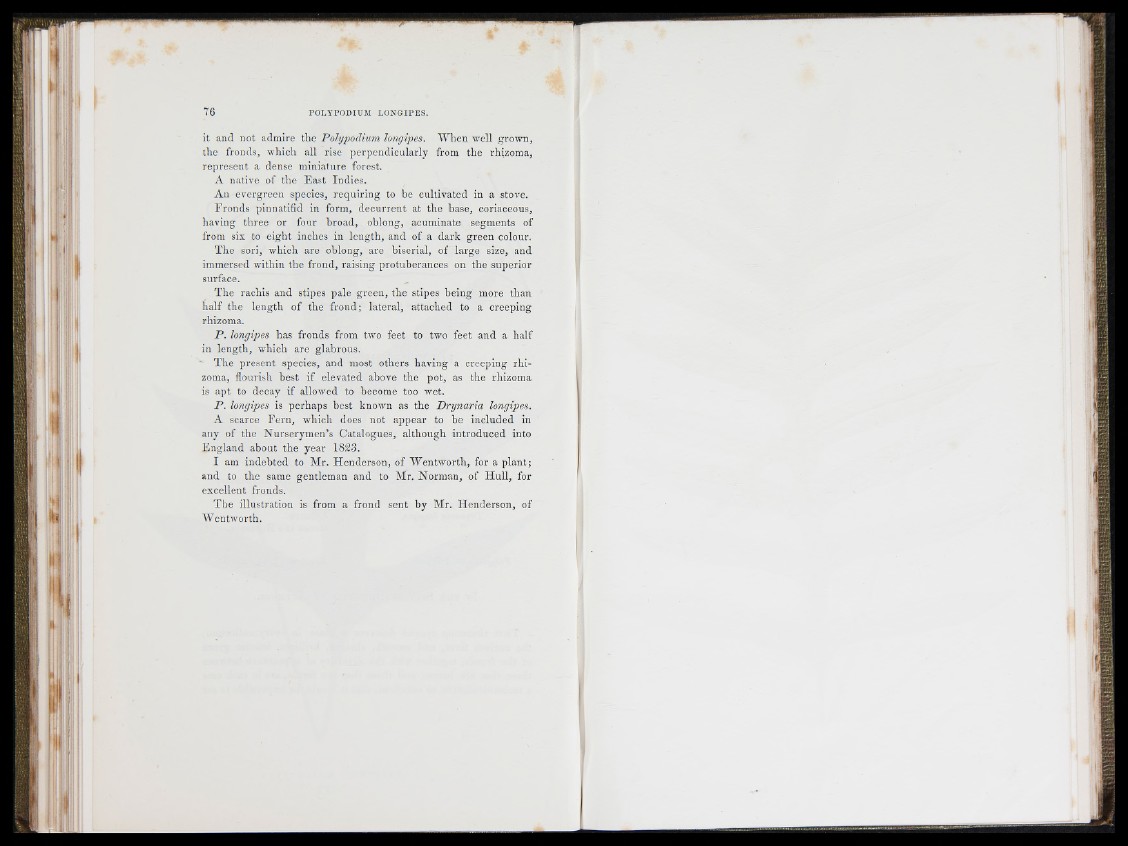
' M S
it and not admire the Polypodium longipes. Wh en well grown,
the fronds, which all rise perpendicularly from the rluzoma,
repre sent a dense miniature forest.
A native of the E ast Indies.
An evergreen species, req u irin g to be cultivated in a stove.
Fro n d s pinnatifid in form, d e cu rren t at the base, coriaceous,
having three or four broad, oblong, acuminate segments of
from six to eight inches in length, and of a dark green colour.
T h e sori, which are oblong, are biserial, of large size, and
immersed within the frond, raising protuberances on the superior
surface.
The rachis and stipes pale green, the stipes being more than
h a lf the len g th of the fro n d ; lateral, attached to a creeping
rhizoma.
P . longipes has fronds from two feet to two feet and a half
in length, which are glabrous.
T h e present species, and most others having a creeping rh izoma,
flourish best i f elevated above the pot, as the rhizoma
is apt to decay if allowed to become too wet.
P . longipes is perhaps best known as the D r yn a ria longipes.
A scarce F e rn , which does not appear to be included in
any of the Nursei'ymen’s Catalogues, although introduc ed into
E ng lan d about the year 1828.
I am in d eb ted to Mr. H en derson, of W en tw o rth , for a p lan t;
and to the same gentleman and to Mr. Norman, of H u ll, for
excellent fronds.
The illustration is from a frond sent by Mr. H en derson, of
Wentworth.